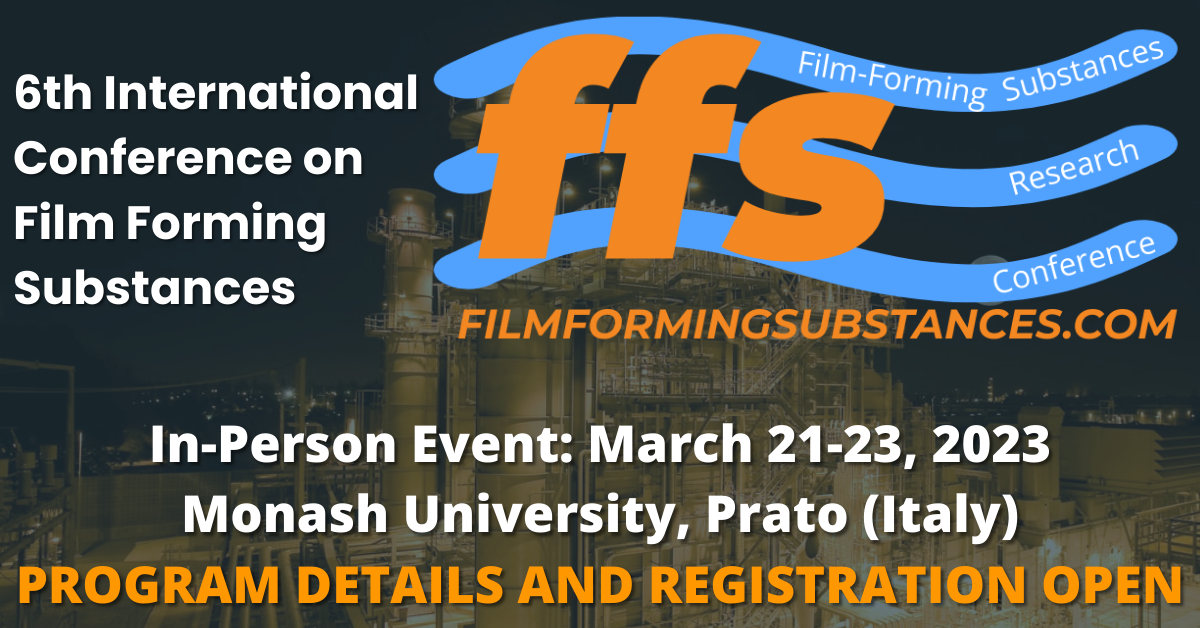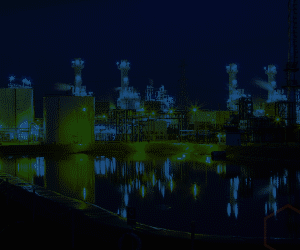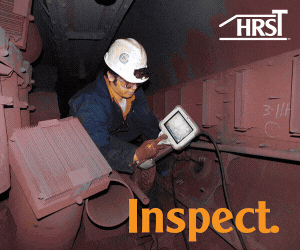Advancements and case studies in film-forming-substance chemistry on display for fossil, geothermal, and nuclear generators
By Steven C Stultz, Consulting Editor
As we prepare for the most comprehensive meeting on film-forming substances to date (see above), a recap of the FFS 2022 follows to bring you and your organizations up-to-speed on the latest science and real-world applications of FFS in generating facilities. Co-chairs Barry Dooley, Structural Integrity (UK), and David Addison, Thermal Chemistry (NZ), organized and led this 2022 conference on behalf of The International Association for the Properties of Water and Steam (IAPWS, www.iapws.org).
Their opening greeting: “Welcome to the virtual world of film-forming substances,” a specialized topic in cycle chemistry control of powerplants and steam generating systems.
The focus: Film-forming substances to protect metal surfaces from corrosion through hydrophobicity. It’s part of the larger effort to control corrosion throughout the water/steam circuits of fossil, nuclear, geothermal, and combined cycle/HRSG plants.
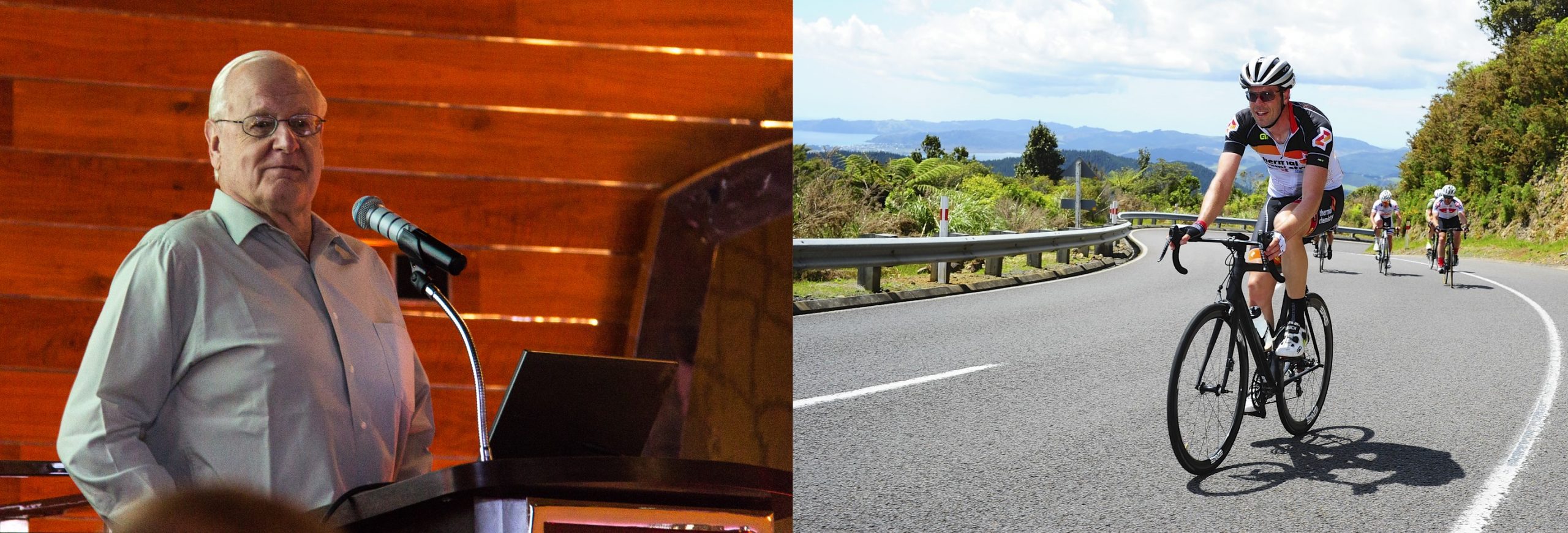
One-hundred forty-six paid attendees—a record—logged in from 30 countries to watch, listen, and participate in 21 technical presentations and discussions. Ten suppliers also presented their credentials and technical details. Participating sponsors of FFS 2022 were Fineamin, Kurita, Nalco Water/Ecolab, Reicon, SUEZ (now Veolia), and Waltron.
FFS conferences, which began in 2017, have become well known as a unique and critical opportunity for plant operators/users to raise questions relating to all aspects of film-forming substances. Dooley stressed the IAPWS goal: “To provide information freely and improve FFS guidance for owners and operators worldwide.”
Below are selected highlights related to combined-cycle plants and operations.
Base definitions
In brief, the term “film-forming substances” represents two main categories of chemicals:
- Amine-based film-forming amines (FFA) and amine products (FFAP).
- Non-amine-based film-forming products (FFP).
There remains general confusion on the nomenclature, but these terms introduced by IAPWS in 2016 have quickly become the global standard.
It is important to note here that the wide range of these products and applications make research and common solutions difficult (table).

Current foundation
“Universally,” explained Dooley, “we are seeing reductions in the measurement of feedwater total iron and copper corrosion products through the use of FFS. There are general visual observations of hydrophobic films in the water-touched areas (mainly feedwater and condensate) of plants, and within air-cooled condensers.
“However,” he continued, “film formation and adsorption remain questionable on steam-touched surfaces.” Also important, a lack of visual evidence of hydrophobicity does not necessarily mean lack of protection.
These complexities, and the underlying understandings of oxide growth, protection, and tube failures, as well as the impact on steam turbines and other plant equipment, make this series of conferences critical for owners/operators of fossil and combined-cycle/HRSG plants, among others.
Cycling and layup protection
Ronny Wagner, managing director, Reicon (Germany), launched the technical presentations with Application of film-forming amines for preservation of water/steam cycles with and without air-cooled condensers. Wagner’s overview covered FFS preservation principles for both flexible operation and long-term layup. He focused on ODA as the film-forming amine (FFA) to offer this fundamentals-only guide.
For cycling units with varying schedules, Wagner explained, a steady and continuous FFA injection at low concentration (50 to 500 ppb) should offer the best protection while offline and should have little to no long-term impact on system water quality. FFA should be injected at the suction side of the feedwater system; the condensate polishing system (if provided) can continue to operate. Any conductivity spike during implementation should return to stable.
For long-term preservation of plants with seasonal shutdown or planned outages, a high feed rate of around 2 ppm should be initiated five to 10 days before shutdown. After shutdown, a lower but steady concentration of 50 to 500 ppb then can be used for follow-up injection.
“After the next shutdown,” he suggested, “it is wise to re-preserve at a high rate (1 to 1.5 ppm) beginning three to five days before the following shutdown. Normal injection is at the suction side of the feedwater system, or in the condensate lines after the polisher.”
The polisher should be bypassed because it will remove the amine from the condensate. Water chemistry values will probably be affected during the injection periods.
Again, these are general rules, Wagner emphasized, “The total FFA consumption for preservation is dependent on surface area, and is both plant and product specific.”
Preservation practices for air-cooled condensers (ACCs) are more complex. Most importantly perhaps, common ACC heat-exchange tubing is carbon steel with large internal surface area, typically thousands of square yards.
ACC design also requires long, large-diameter lines from the LP steam turbine outlet to the ACC upper duct (street), to handle the two-phase steam/water mixture. The tube entries within the ACC upper duct become corrosion-active surfaces for flow-accelerated corrosion (FAC), and there is normally high iron concentration downstream of the ACC during and after startup. Thus, high FFA concentrations at the ACC inlet often are necessary.
ACC case history
A 70-MW combined cycle completed commissioning, but had to idle because of a delayed grid connection. It was critical to protect the ACC. The solution was injection of FFAP (Odacon®) in front of the ACC. Following application, hydrophobic surfaces were visible in the feedwater system and condensate receiving tank (Fig 1).
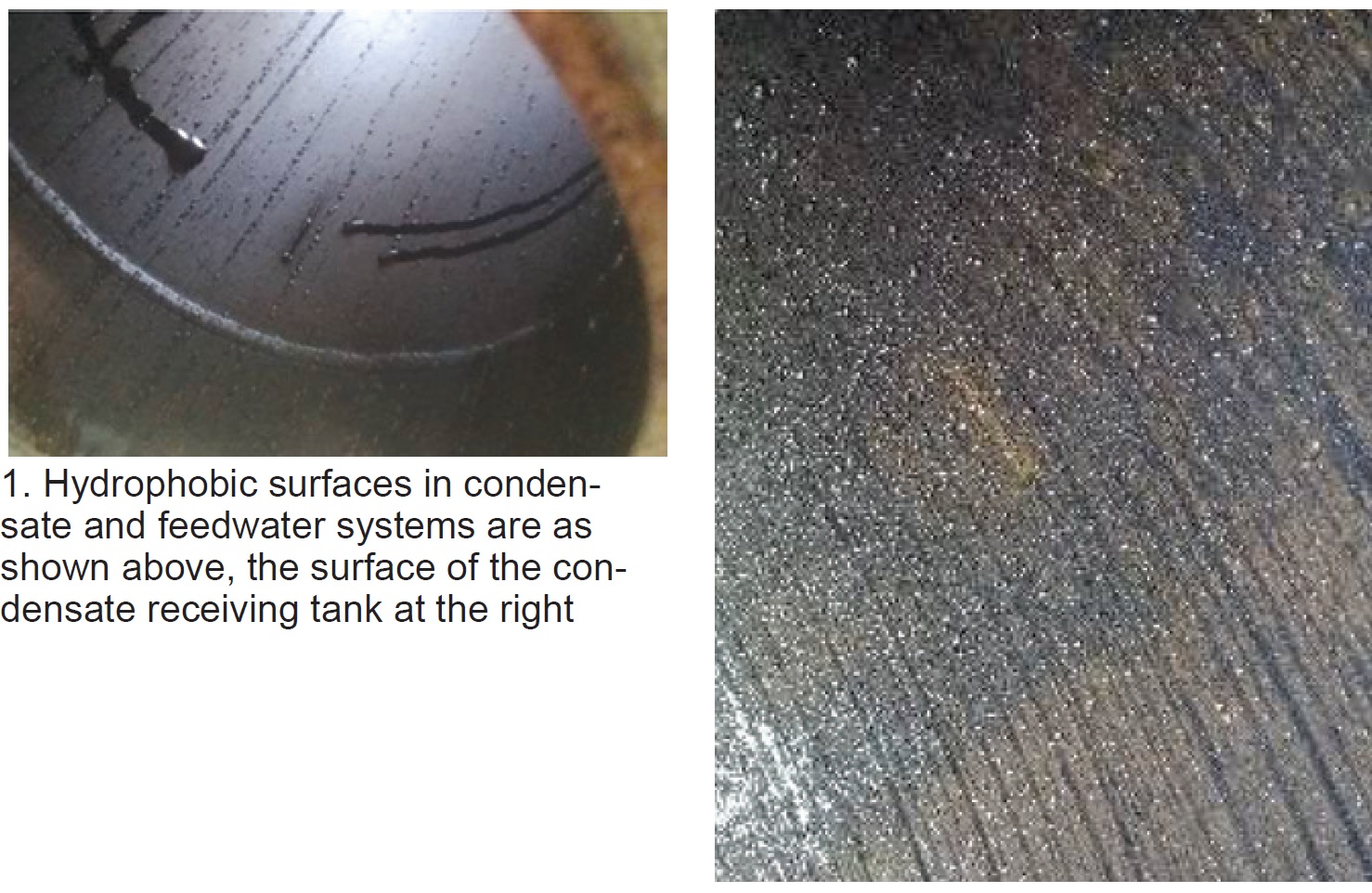
After grid connection and during startup, there were no noticeable issues with corrosion.
Wagner took the opportunity here to emphasize the Dooley Howell ACC Corrosion Index for operating comparisons. Having a proper total iron baseline and use of this index for results comparisons are critical analysis tools to assess FFS impact, he explained. For a clear discussion of the DHACI, access ACC.01: “Guidelines for Internal Inspection of Air-Cooled Condensers” at http://acc-usersgroup.org/Reports.
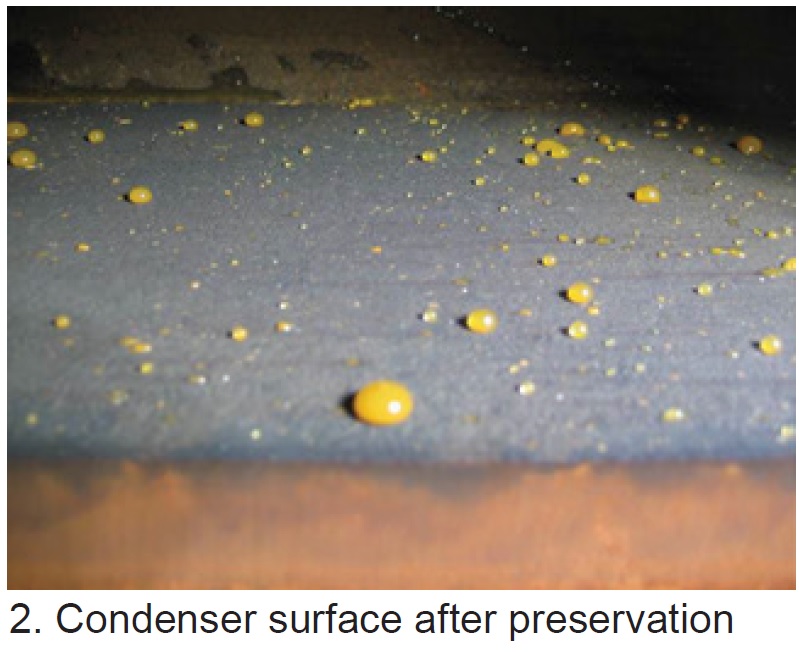 Case study without ACC
Case study without ACC
An 800-MW plant with drum-type HRSG and no condensate polishing unit moved to flexible operation (less time online) and a fast-start requirement. Baseline review showed high iron levels during startup, especially in the IP section of the HRSG.
Preservation was performed in several steps beginning with injection of Odacon in the main condensate line after the condensate pump. Inspection showed hydrophobic protection (Fig 2).
Startup time was halved, and iron concentration in the IP section during re-start was reduced by 70%. For the off cycles, previously-applied nitrogen injection for short-term protection was no longer necessary.
In both cases, total iron transport in the water/steam cycle was reduced.
Biofuels
Attention turned to Agata Zietec, Jönköping Energi, and a combined heat and power (CHP) plant in Sweden burning both household waste and a variety of biomass fuels in two fluidized-bed boilers.
The plant experienced feedwater system issues, including blockages, and preheater FAC. Some parts of the plant were in annual seasonal shutdown for up to five months. Traditional treatment included ammonia and phosphate.
Operators selected Odacon, largely because of positive global nuclear plant experience, and began dosing at the feedwater pump.
The required flow was calculated to be minimum rate at full boiler load and maximum rate at lowest load. To prepare for offline protection, continuous FFS dosing (up to 0.3 ppm amine) was performed from February until the end of the run season (three months).
Iron content in feedwater during startup was significantly reduced and many existing deposits were removed from the turbine area. There was no noticeable impact on online instruments. The applications seem to offer effective protection during layup.
Geothermal
Geothermal processes offer unique challenges in scaling and corrosion. Two case studies were presented focusing on Kurita FFS geothermal technology developments in Turkey and Indonesia.
Worldwide, the most common direct use of geothermal energy is district heating. For power generation, uses include dry steam and flash steam powerplants, binary-cycle powerplants, and combined units.
Common corrosion mechanisms are high salinity, high reservoir temperatures, high gas content, and low pH. Scaling issues come from varying mineral compositions, changes in pressures and pH, water cooling in heat exchangers, and other site-specific issues.
Pilot systems reviewed showed good corrosion protection (Organic Rankine Cycle area), including reduced under-deposit corrosion.
Industrial hot water
A New Zealand dairy factory uses a 10-MW industrial hot water system of carbon steel construction with titanium heat exchanger, introduced in 2019. After two years of operation, the system suffered tube metal loss of up to 56%, according to data provided by IRIS Inspection Services. The system was continually saturated with oxygen and iron levels exceeded 160 ppm with a reducing chemistry program.
Following IAPWS TGD11-19 guidelines regarding steam purity, Odacon was dosed at 0.5 to 1 ppm. Pumps and seals were upgraded to reduce oxygen ingress.
Results showed bulk water iron levels reduced below 1 ppm. Using three to four times the recommended saturation volume for heavily corroded systems, there was a 96.8% reduction in corrosion rate after five months.
Photos were shown of the seven-month inspection in this ongoing program.
Next steps will be an online filming amine analyzer (Waltron), reintroduction of sulfite to see if low oxygen levels have an impact on iron chemistry, change to an optical luminescent dissolved-oxygen (DO) sensor, acid cleaning, and 100% IRIS testing of tubes.
Nuclear experience
Multiple presentations focused on FFS application experience (primarily ODA, octadecylamine) at nuclear plants. ODA has been applied to nuclear facilities in seven countries, and one presentation discussed more than a decade of experience with positive results for feedwater iron levels and measurable particle-size reduction.
The two units discussed, pressurized water reactors commissioned in the early 1980s, are good examples of steam-generator replacement (1996-1997) and turbine upgrades (2010-2011) to continue operating well beyond their original service dates. Water quality becomes even more critical.
In another presentation, Efficiency and harmlessness of film-forming amines used as alternative layup method in secondary circuit of pressurized-water nuclear power plants, similarities also were present. The secondary circuit (steam generators, turbine, and condenser) includes carbon and low alloy steels with surfaces covered by magnetite. During refueling or other outages, oxygen and humidity can lead to generalized corrosion and require layup protection.
Traditional protection methods are either drainage and drying to a relative humidity below 40%, or filling with chemically conditioned water. Both are time consuming and can be difficult.
A presentation by EdF explained an alternative method using film-forming amines (ODA) to inhibit corrosion. Detailed background was given for ODA behavior on different oxide samples at different temperatures, methods used to better understand the related adsorption mechanisms of ODA on various surface states (including testing protocols), and simulations of film efficiencies during layup.
Specifics were presented on morphology and contact angle measurement, electrochemical impedance spectroscopy, chemical composition analysis (ATR-IR and XPS), and other methods.
Beyond these three, presentations dealt with gasket and elastomer testing, and corrosion inhibition by anionic surfactants.
J Fandrich, Framatome, gave an update on the IAPWS Technical Guidance Document for FFS application in nuclear powerplants, a current initiative within the Power Cycle Chemistry (PCC) Working Group. The hope is to finalize this at the IAPWS Annual Meeting in November 2022. Fandrich highlighted the differences compared to fossil water/steam cycle materials, design, chemistry, and steam-generator operation.
At the laboratory
Day Two began with a deep dive into air-cooled condensers, important because they can release significant quantities of iron-oxide corrosion products into the water/steam system serving the entire plant (Fig 3). Risks include HRSG evaporator interior tube deposits (and failures) from iron transport (Fig 4).
Andy Howell, EPRI, took attendees to the upper ducts (Fig 5), “where the corrosion rate is high and tube-entry wall thickness is small.” Corrosion-caused leaks here can draw air into the condenser. This leads to costly performance, maintenance, equipment damage, and availability problems.
In the past, reducing iron levels in the system had been through increasing pH.
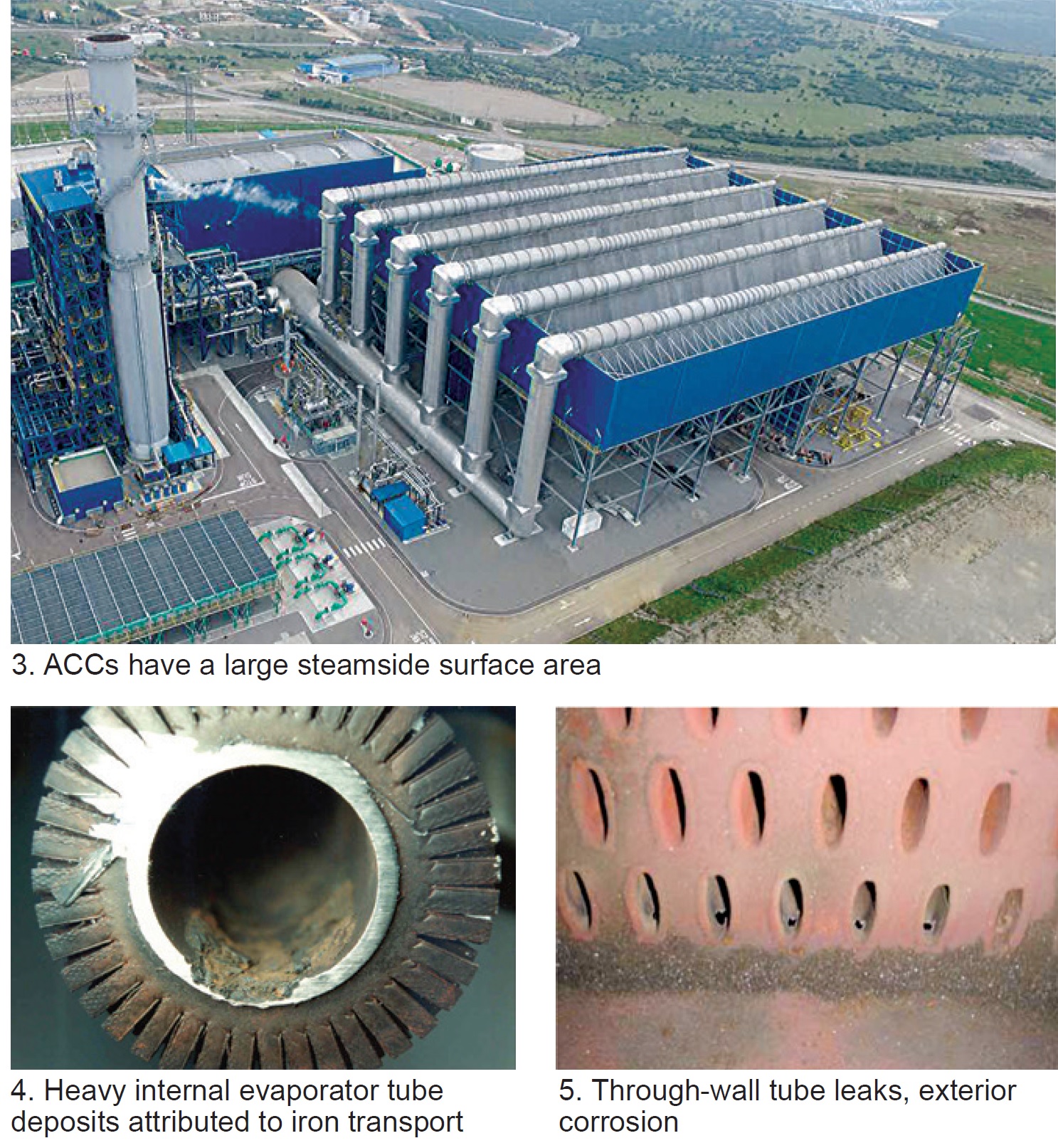
Howell explained a laboratory approach to simulating the ACC steam-side (two-phase) environment at the heat exchanger tube entries. The main results were:
- Ammonium hydroxide involves simple chemistry and is inexpensive; it has proven suitable for system pH control in many ACCs.
- Properly selected and applied neutralizing amines can reduce corrosion in ACCs compared with ammonium hydroxide, and can be used in conjunction.
- FFPs appear to be very effective at reducing corrosion in ACCs under the right conditions.
XPS and EIS
A takeaway mentioned during a discussion period was that university laboratories and staff can help the industry with advancing sciences related to FFS.
One presentation was a deep dive to the molecular level using x-ray photoelectron spectroscopy (XPS). Rob Lindsay, The University of Manchester (UK), offered empirical insights including trial-and-error discussions.
The key target is FFS interface characterization at the microscopic level. This is part of a Manchester research effort into adsorption thermodynamics and interface characterization.
XPS basics were explained and profiles interpreted. Results hope to offer knowledge-based development of the next-generation corrosion inhibitors.
During discussions, Dooley emphasized: “This helps provide key insights, using XPS, to prove the presence of, but not the continuity of films with potential to move away from the standard hydrophobicity tests. This would be a great future outcome for tube sampling and analysis if it can be proven to work in real operating environments.”
The University of Toulouse (France) came soon after, with Adsorption kinetics of film-forming amines on carbon steel surface using electrochemical impedance spectroscopy (EIS). EIS is used to monitor variations of the electrochemical system over time, and to identify the processes occurring at the metal/solution interface. The presentation focused on experimental protocols using submerged carbon steel with and without the FFS OLDA.
Work continues with in-situ monitoring of FFA barrier formation for representative industrial conditions.
As a concluding comment to these presentations, Dooley offered what he believed to be the key takeaway from the lab studies portion of the program: “For the first time at FFS conferences, basic research is presented on film-forming corrosion inhibitors [oleic-based imidazoline (OMID) and sodium lauryl lactylate (SLL)] in different corrosive environments (HCl, H2SO4) than are found in powerplants using XPS and EIS.
“It is hoped that the insights on how the filming molecules interact with metal surfaces (carbon steel) under severe chemical environments at lower temperatures can provide advancements in the studies of FFS on materials in powerplant environments.”
Field-switching of FFS
As a follow-on to last year’s FFS conference, and providing a long-term outlook, PacifiCorp’s Gary Hoffman presented Switching from non-amine FFS to blend of amine/non-amine FFS at the Hunter Power Station.
The subject is Hunter Unit 3, a 430-MW subcritical coal-fired plant in Utah, designed for baseload service, that began operating in 1983. With the owner’s move to increase solar power’s contribution, Hunter 3 is now cycling with daily swings from full load to 10 to 15%.
The last chemical cleaning was in 2012, when nearly 5000 lb of magnetite was removed, and 400 lb of copper recovered. The full-flow deep-bed condensate polishers have been in service since the mid-1990s. Boiler tubes show some under-deposit corrosion.
Chemistry control strategies are:
- AVT(O) chemistry control, ammonia for feedwater.
- Tri-sodium phosphate and caustic for drum pH control during startup.
FFP history was given at the Fourth Annual IAPWS FFS conference in 2021 after two years of Anodamine FFP feeding. On June 28, 2021, operators switched Unit 3 to SUEZ Polyamine Plus based on economics (significant dosage reduction). The program intent remains protection while offline.
The SUEZ second-generation filming technology acts as a dual filmer (FFA and non-amine FFP) that adsorbs quickly and desorbs slowly.
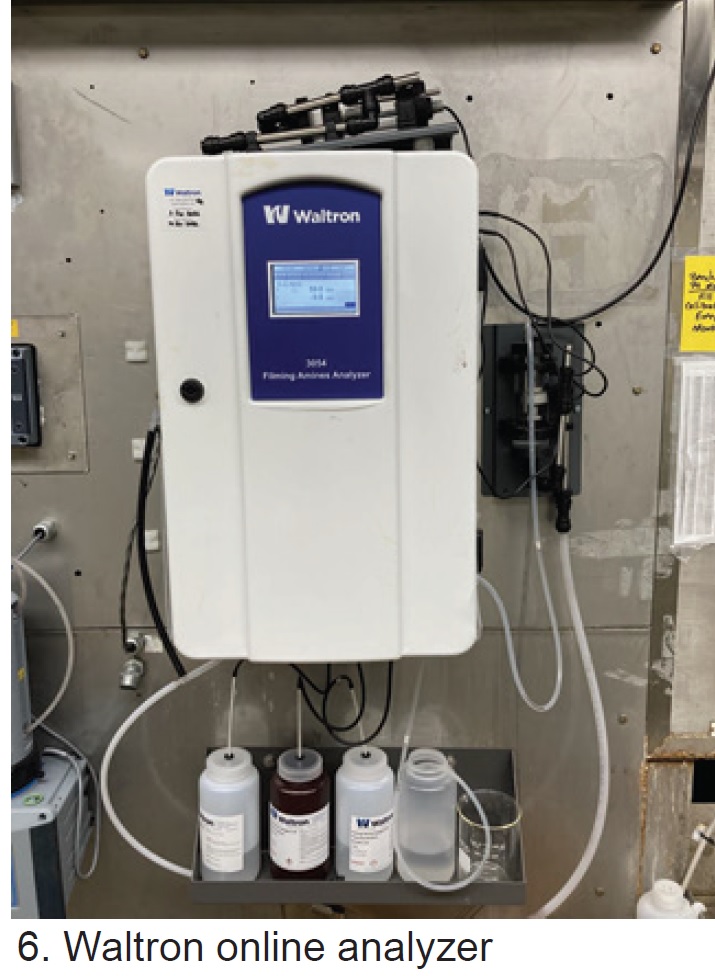 Monitoring and control currently are provided by:
Monitoring and control currently are provided by:
- Online corrosion product sampler.
- Online Waltron 3054 amines analyzer (Fig 6).
- Corrosion coupons on the condensate-pump discharge.
- Grab samples for product concentration analysis.
- DCS controlling chemical feed pumps based on megawatt load.
- Inspections when possible.
During the first eight months, the unit was subjected to eight trips, eight recorded starts, and four outages of more than one day. Moving averages of iron and copper concentrations are shown in Fig 7.

All testing coupons are sent to Lehigh University (US) for XPS analysis. Results confirm the presence of both FFS actives on the surfaces of the coupons. The summary given by Hoffman notes excellent corrosion results during normal operations, with minimal corrosion spikes at startups. The key result is that there was no noticeable difference.
This is an ongoing project, which will also move to other units within the owner’s system. Work continues to measure results and optimize feed rates (currently 1 to 1.5 ppm total product).
One question during discussions pointed to a need for further industry research. That question: “Did you fully remove the first FFS (non-amine) before using the blend?” The answer: “We do not know.”
Dooley later offered a broader perspective: “Further plant and laboratory studies will help confirm the similarity of film properties and protection formed with the wide range of FFS currently on the market.” He invited participants to consider and encourage additional test sites worldwide. In closing the discussion on this topic, Dooley said, “This information was one of the key results from this conference.”
Instrumentation
Waltron’s Hal Stansfield, chief chemist, presented Instrumentation and FFS: the good, the bad, and the ugly. The content was two-fold: development of instruments to measure and control the applications of FFS, and growing concerns that FFS are having damaging effects on existing instrumentation.
On the positive side, Waltron’s online analyzer is effective at monitoring total condensate flow versus the concentration of amines (Fig 8). On the negative side, FFS are creating issues with ion-selective and pH electrodes, dissolved oxygen sensors, and colorimetric analyzers. There are lab reports of sodium electrode failures.
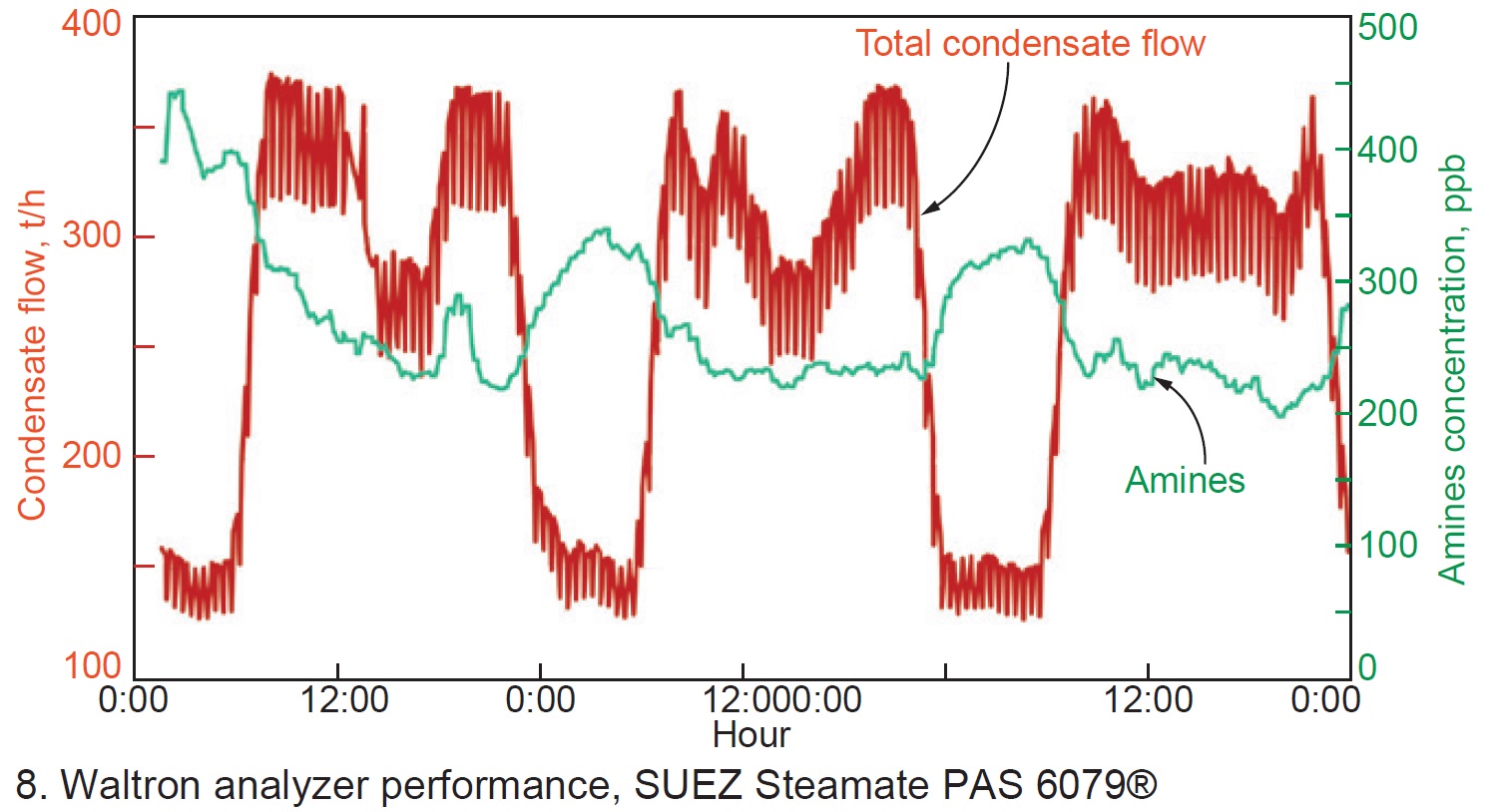
These issues, and proposed solutions, were reviewed. The conclusions: Instruments must be protected, and improved, because FFS have an important place in water and steam chemistry programs. Research is ongoing.
Baseline, due diligence
As a prelude to planning the use of any FFS, a proper baseline is critical. As stated in IAPWS TGD8-16(2019) p 7, “If plants have not previously made thorough assessments of the chemistry used, the consequences of using an FFS cannot be clearly demonstrated.”
Co-chair Addison stressed attention to detail. “Good planning is absolutely critical,” he emphasized. Failure to do proper due diligence can lead to:
- Suboptimal FFS selection.
- Incorrect application of an FFS.
- Failure to obtain full benefits of an FFS.
- Consequential plant issues including equipment failures.
- Excessive application costs with little or no technical benefit.
The key starting points should always be the IAPWS technical guidance documents, available for download and at no cost. The relevant documents for this discussion are these:
- Instrumentation, TGD2-09(2015).
- Corrosion product sampling, TGD 6-13(2014).
- Steam purity, TGD5-13.
- Film-forming substances for fossil, combined-cycle, and biomass plants, TGD8-16(2019).
- Film-forming substances for industrial facilities, TGD11-19.
Section 8 of TGD8-16(2019) p 18, provides operational guidance for operators/users for the continuous addition of an FFS. Your due diligence should include a review of the following:
- Local regulations and suppliers.
-
- Is the product approved and available in your area?
- How will the product get to you, and are there supply-chain risks?
- Supplier competence and willingness.
-
- Will supplier engage with you technically?
- What are supplier’s technical resources?
- Will supplier support you in testing (coupon bench tests, etc.)?
- Annual cost estimates:
-
- Projected FFS consumption.
- Flexible operation rates (often two to five times greater).
- Dosing required at shutdown.
- Your plan versus what others are doing.
- Robust residual analysis methods: Do they work? (bench tests and online analyzers).
- Does the selection impose any technical/commercial/legal restrictions to your site?
- Can you discuss experiences with others one-on-one or at technical conferences?
- Can you use third-party experts for support?
Many of these concerns were highlighted in the final discussions section of the conference.
Path to needed research
The wide range of FFS products, mixtures, and suppliers make research and common solutions difficult. Much of the current industry work is on metal surfaces rather than the oxide surfaces that form within plants. Fundamental research targets are:
- Effect of FFS on growth mechanisms of iron, copper and chromium oxides in water and steam.
- Effect of FFS on boiler and HRSG tube failures (under-deposit corrosion, corrosion fatigue) and stress corrosion cracking.
- Film formation, kinetics, structure and porosity of water- and steam-touched oxide surfaces, to include changes of FFS.
- Uncertainty of thermal degradation, stability limits, and decomposition products for FFA—and especially FFP—under oxidizing and reducing conditions.
- Uncertainty of adsorption onto oxide surfaces for all FFS (FFA, and especially FFP).
- Protection of superheated-steam surfaces with all FFS (FFA, and especially FFP).
- There is evidence of increased steam-turbine performance for amine-based FFS (ODA), but what about other FFAs and FFPs?
Upcoming conferences
The research needs for film-forming substances are a major topic for the next IAPWS Annual Meeting, Nov 27 to Dec 2, 2022, in Rotorua, New Zealand. Dooley serves as executive secretary for IAPWS, David Addison as chairman of the IAPWS Power Cycle Chemistry Working Group.
Mark your calendar: The Sixth IAPWS FFS International Conference will be held Mar 21 – 23, 2023 at Monash University, in Prato, Italy. Details and registration now available at www.filmformingsubstances.com.
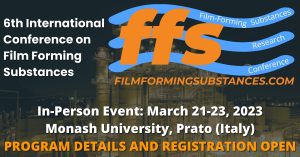 |
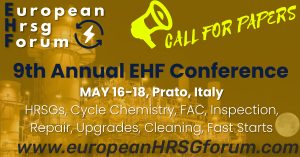 |
 |



